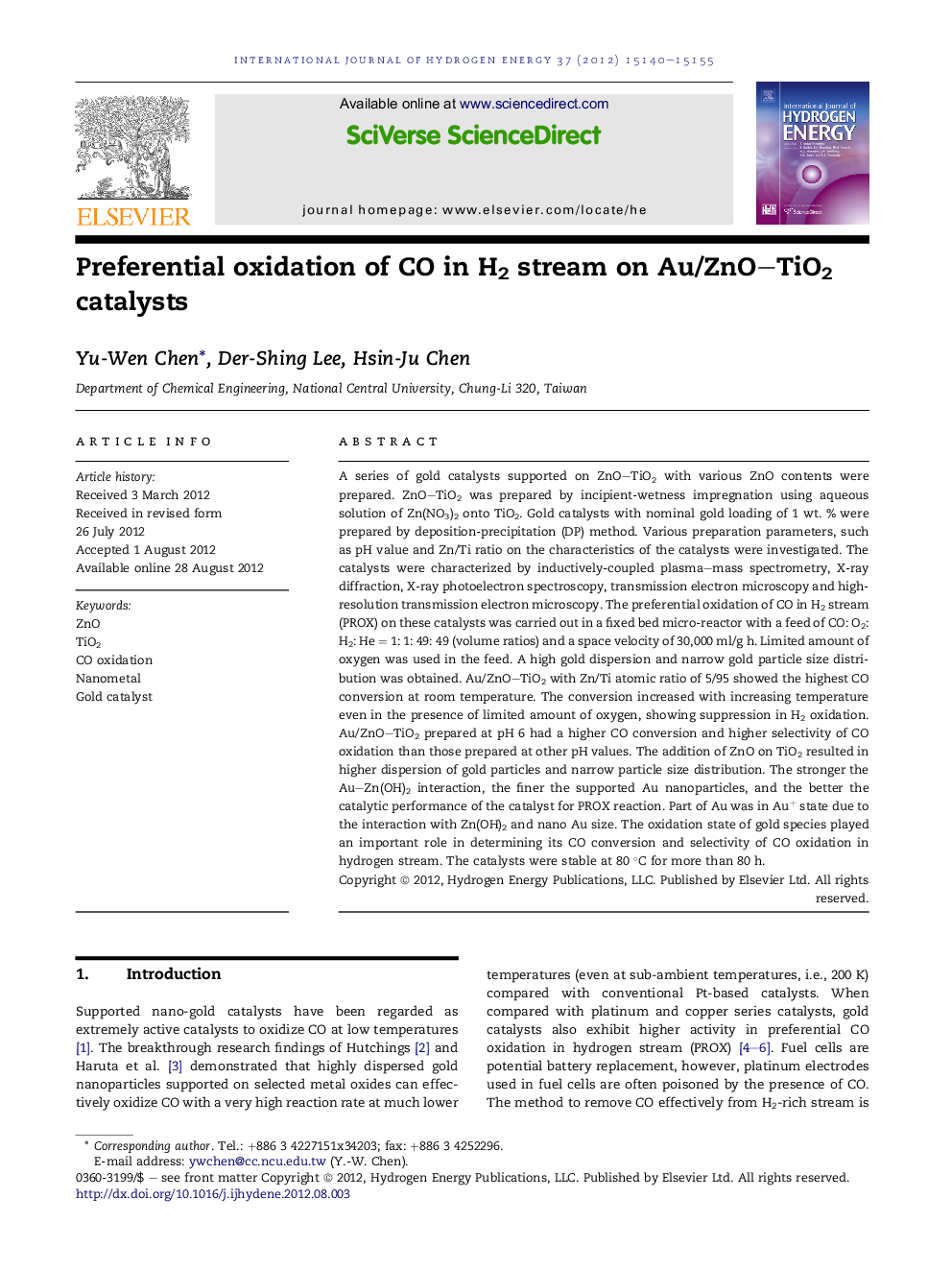| کد مقاله | کد نشریه | سال انتشار | مقاله انگلیسی | نسخه تمام متن |
|---|---|---|---|---|
| 1274523 | 1497549 | 2012 | 16 صفحه PDF | دانلود رایگان |

A series of gold catalysts supported on ZnO–TiO2 with various ZnO contents were prepared. ZnO–TiO2 was prepared by incipient-wetness impregnation using aqueous solution of Zn(NO3)2 onto TiO2. Gold catalysts with nominal gold loading of 1 wt. % were prepared by deposition-precipitation (DP) method. Various preparation parameters, such as pH value and Zn/Ti ratio on the characteristics of the catalysts were investigated. The catalysts were characterized by inductively-coupled plasma–mass spectrometry, X-ray diffraction, X-ray photoelectron spectroscopy, transmission electron microscopy and high-resolution transmission electron microscopy. The preferential oxidation of CO in H2 stream (PROX) on these catalysts was carried out in a fixed bed micro-reactor with a feed of CO: O2: H2: He = 1: 1: 49: 49 (volume ratios) and a space velocity of 30,000 ml/g h. Limited amount of oxygen was used in the feed. A high gold dispersion and narrow gold particle size distribution was obtained. Au/ZnO–TiO2 with Zn/Ti atomic ratio of 5/95 showed the highest CO conversion at room temperature. The conversion increased with increasing temperature even in the presence of limited amount of oxygen, showing suppression in H2 oxidation. Au/ZnO–TiO2 prepared at pH 6 had a higher CO conversion and higher selectivity of CO oxidation than those prepared at other pH values. The addition of ZnO on TiO2 resulted in higher dispersion of gold particles and narrow particle size distribution. The stronger the Au–Zn(OH)2 interaction, the finer the supported Au nanoparticles, and the better the catalytic performance of the catalyst for PROX reaction. Part of Au was in Au+ state due to the interaction with Zn(OH)2 and nano Au size. The oxidation state of gold species played an important role in determining its CO conversion and selectivity of CO oxidation in hydrogen stream. The catalysts were stable at 80 °C for more than 80 h.
► Part of Au was in Au+ state due to the interaction with Zn(OH)2 and nano Au size.
► The presence of Zn(OH)2 could stabilize this Au+ species.
► CO and O2 could adsorb on this site and react with each other.
► The stronger the Au–Zn(OH)2 interaction, the better the performance of the catalyst.
Journal: International Journal of Hydrogen Energy - Volume 37, Issue 20, October 2012, Pages 15140–15155